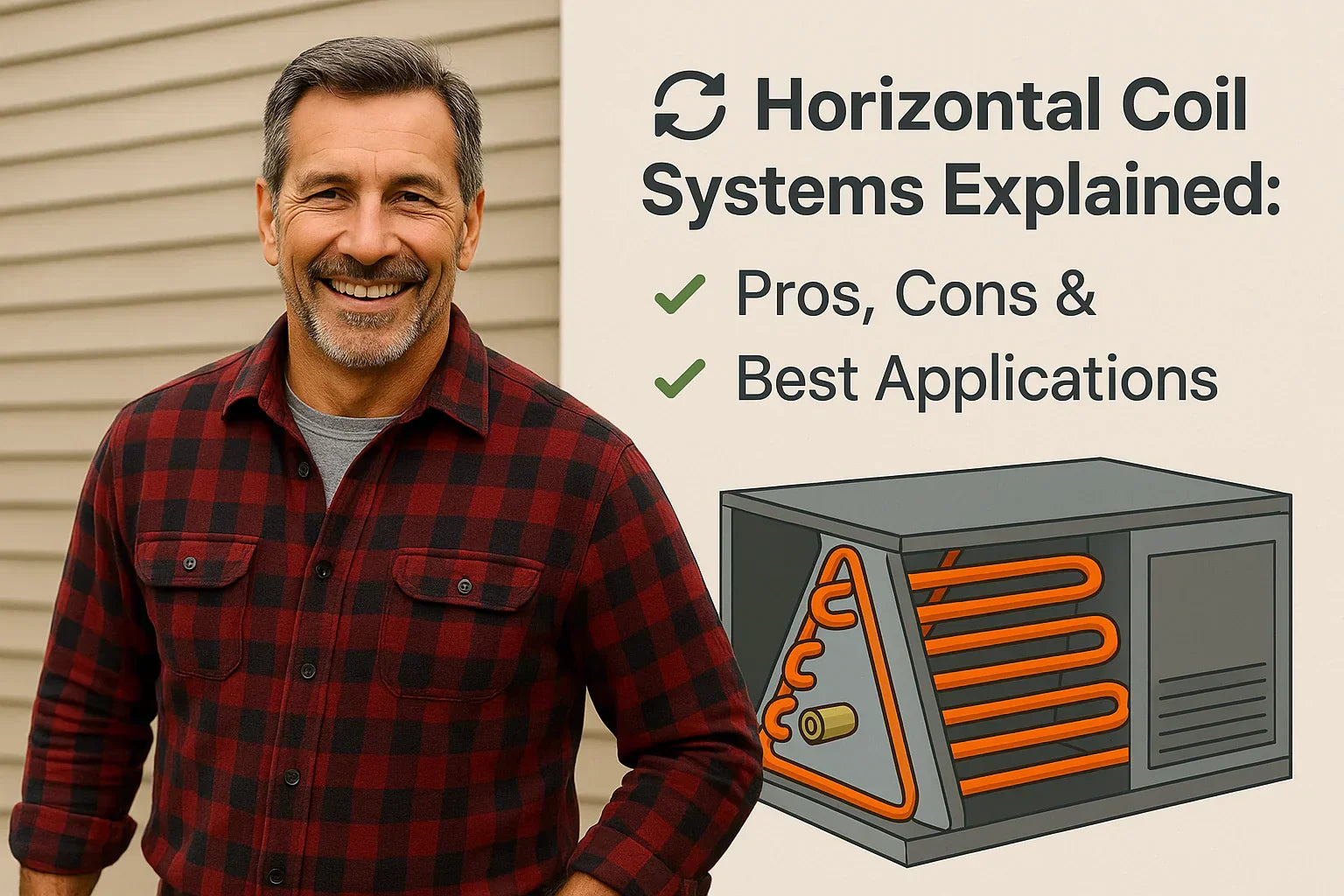📘 Introduction to Horizontal Coil Systems
In HVAC systems, the orientation of components like evaporator coils significantly impacts performance and installation flexibility. Horizontal coil systems, designed for side-to-side airflow, are particularly suited for spaces with limited vertical clearance, such as attics or crawl spaces.
✅ Advantages of Horizontal Coil Systems
1. 🏠 Space Efficiency
Horizontal coils are ideal for installations where vertical space is constrained. Their design allows them to fit into tight spaces without compromising functionality.
2. 🔧 Easier Maintenance
Due to their accessible placement, horizontal coils are often easier to service and clean, reducing maintenance time and costs.
3. 🌬️ Improved Air Distribution
In certain layouts, horizontal airflow can provide more uniform air distribution, enhancing comfort levels within the space.
❌ Disadvantages of Horizontal Coil Systems
1. ⚙️ Potential for Reduced Efficiency
In some cases, horizontal coils may not be as efficient as their vertical counterparts, especially if not properly installed or maintained.
2. 💧 Drainage Challenges
Ensuring proper condensate drainage can be more complex with horizontal coils, requiring precise installation to prevent water accumulation.
3. 🔊 Noise Considerations
Depending on the installation, horizontal systems may transmit more operational noise into occupied spaces.
🧰 Best Applications for Horizontal Coil Systems
1. 🏡 Residential Attics and Crawl Spaces
Homes with limited vertical space benefit from horizontal coil systems, allowing for efficient HVAC solutions without major structural modifications.
2. 🏢 Commercial Ceiling Installations
In commercial settings, horizontal fan coil units can be mounted above ceilings, preserving floor space and aesthetics.
3. 🏫 Educational and Healthcare Facilities
Facilities requiring unobtrusive HVAC solutions often utilize horizontal systems to maintain clear floor areas and accommodate specific design requirements.
🔍 Comparison: Horizontal vs. Vertical Coil Systems
| Feature | Horizontal Coils | Vertical Coils |
|---|---|---|
| Space Requirements | Ideal for low-clearance areas | Requires more vertical space |
| Maintenance Access | Generally easier due to placement | May be challenging in confined spaces |
| Airflow Direction | Side-to-side | Upflow or downflow |
| Efficiency Potential | Slightly lower if not optimized | Typically higher with proper installation |
| Installation Complexity | Moderate | Can be more complex |
🛠️ Installation and Maintenance Tips
-
Proper Sizing: Ensure the coil size matches the HVAC system's capacity to maintain efficiency.
-
Level Installation: Install coils level to facilitate proper condensate drainage.
-
Regular Cleaning: Schedule routine cleaning to prevent dust and debris buildup, which can impede airflow and efficiency.
🔗 External Resources
By understanding the specific advantages and limitations of horizontal coil systems, homeowners and facility managers can make informed decisions that align with their spatial constraints and HVAC efficiency goals.
In the next topic we will read about: How to Maximize Efficiency with Your Goodman Heat Pump: Mike Sanders' Thermostat & Filter Hacks







